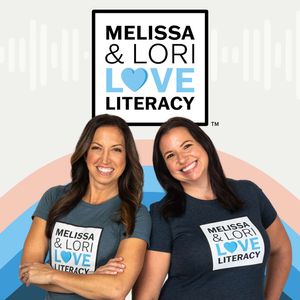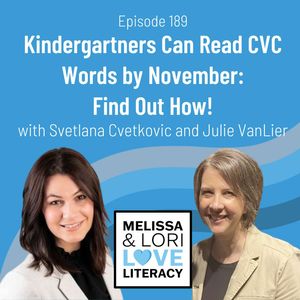
Melissa & Lori Love Literacy ™
Powered by Great Minds
Ep. 189: Kindergartners Can Read CVC Words by November: Find Out How!

Ep. 189: Kindergartners Can Read CVC Words by November: Find Out How!
Description
Julie VanLier and Dr. Svetlana Cvetkovic discuss their experiences and successes teaching phonics. They both highlight the importance of a speech-to-print approach and the impact it has had on their students' reading and spelling abilities. The conversation also delves into the principles of speech to print and the scope and sequence of instruction. They emphasize the importance of interleaving, where concepts are revisited over time. The integration of phonics into all aspects of reading and writing is key, as well as the use of authentic text. Overall, their approach focuses on engagement, flexibility, and integration to ensure student success in literacy.
Takeaways
- Teaching phonics using a speech-to-print approach can lead to significant improvements in students' reading and spelling abilities.
- The principles of speech to print include the understanding that one, two, three, or four letters can spell a sound.
- A sound can be spelled in many different ways, and the same spelling can represent different sounds.
- The scope and sequence of instruction in a speech-to-print approach involves teaching students the different sound-spelling patterns and helping them understand the logic and patterns of the English language.
Key Tenets of Speech to Print
- Sounds can be represented by 1, 2, 3, or 4 letters.
- Sounds can be spelled different ways.
- Spellings can be pronounced in different ways.
Resources
- Julie's iReady scores infographic
- Kinder spelling phase comparisons using traditional & speech-first phonics approaches infographic
- Evidence-Based Literacy Instruction (EBLI)
- Li & Wang (2023) self-teaching meta analysis -- self-teaching was enhanced through phonological recoding via spelling
- A step-by-step pdf for k-2 teachers using FREE speech-first resources-- I especially encourage kinder teachers to take the free 1-hour Udemy course by John Walker (founder of Sounds-Write) as it includes a full scope & sequence for teaching the basic code and even into the beginning advanced code
- Ep. 147: Hot Topic Series: What is Speech to Print?
We wrote a book! The Literacy 50-A Q&A Handbook for Teachers: Real-World Answers to Questions About Reading That Keep You Up at Night
- Facebook and join our Facebook Group
Don't miss an episode! Sign up for FREE bonus resources and episode alerts at LiteracyPodcast.com
Helping teachers learn about science of reading, knowledge building, and high quality curriculum.